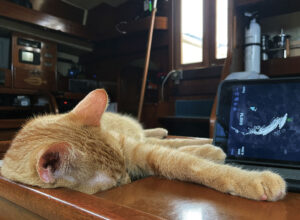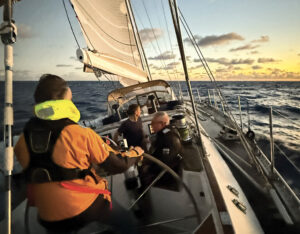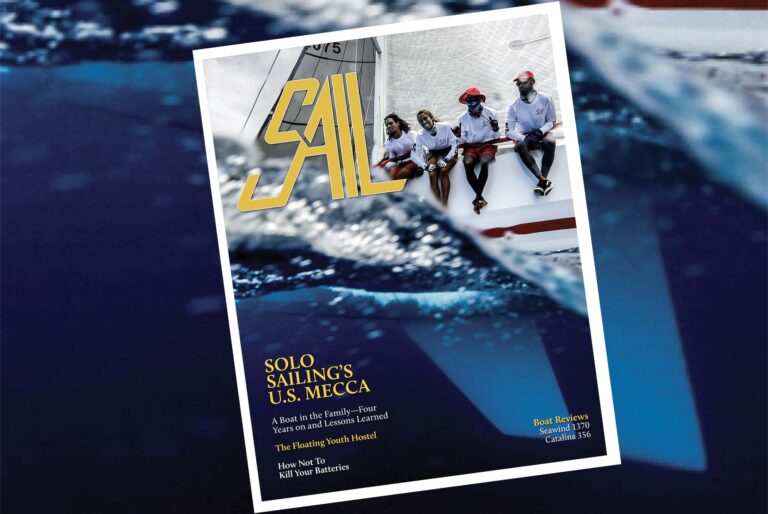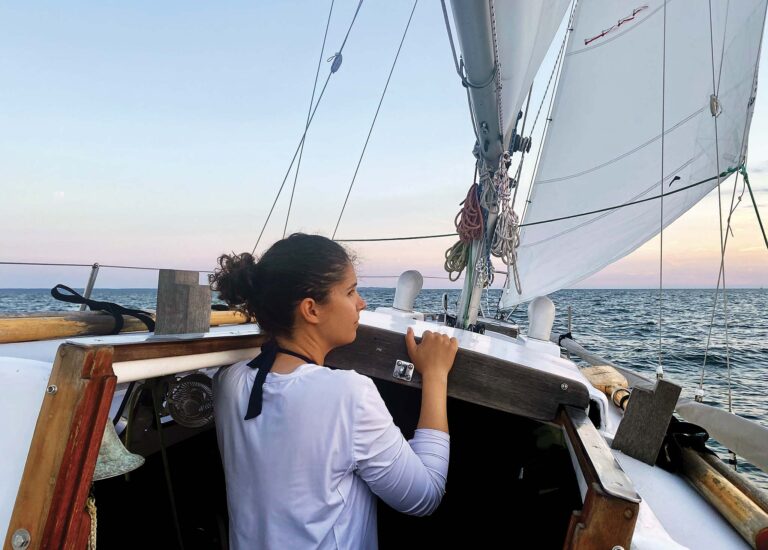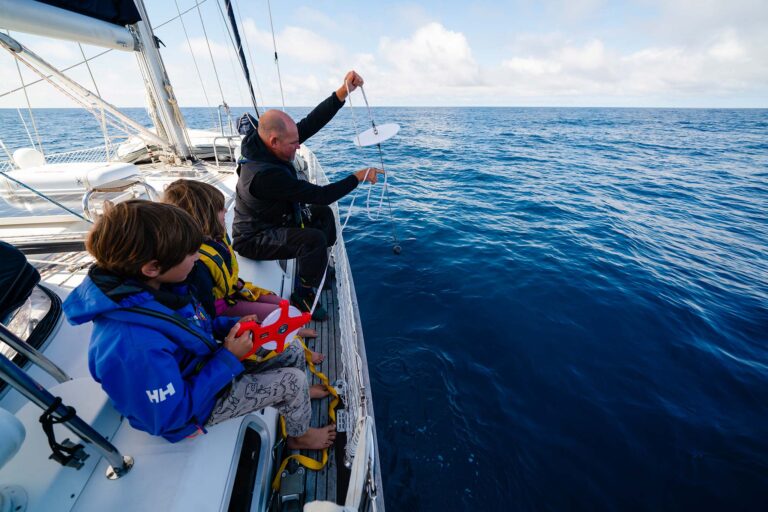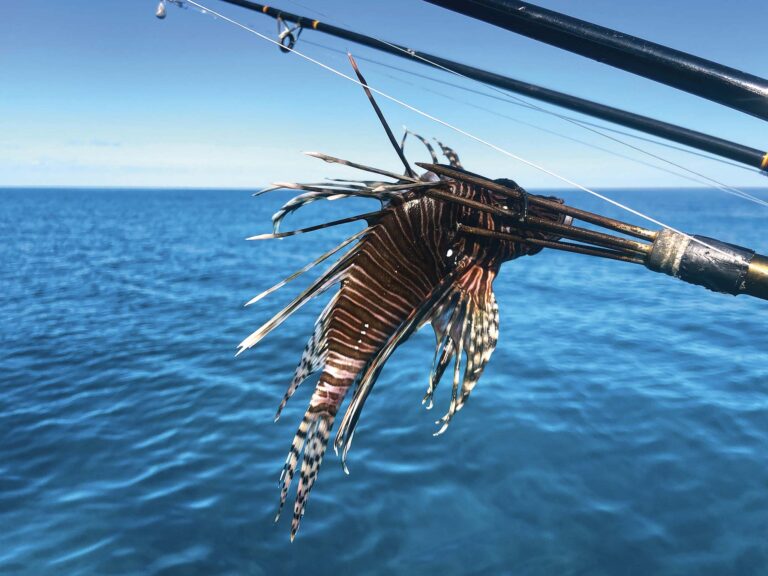I had been hired to sail a 100-foot motorsailer from Italy to the West Indies. After an extensive refit, my wife, Sarah-Jayne, and four other crew moved aboard and we prepared to get underway. I carefully inspected the 150-ton craft and was satisfied the boat was well found and in good condition with all the proper safety equipment aboard. An automatic fire-extinguisher system was installed in the machinery spaces and individual fire extinguishers of the required size and type were situated in every compartment below, as well as on deck and in the lazarette.
With a good weather forecast, we departed Civitavecchia and enjoyed a nice sail through the Strait of Bonifacio before shaping a course for Gibraltar. We got there several days later with no problems and moored up to refuel. The following day we cleared the strait and headed out into the Atlantic before laying a course southwest toward the Canary Islands.
I was beginning to think we would have an easy passage down to the islands. But when we were still several hundred miles northeast of the Canaries, things began changing quickly. First the wind slowly shifted into the southwest and began to build. Several hours later it was gusting up over 50 knots. Nonetheless, the yacht handled it surprisingly well. With a double reef in the main and a small staysail up, the big 400hp main engine kept us moving along quite easily through the large oncoming seas, running at about one-quarter throttle. However, some hours later a confused cross-sea developed and we began taking a fair amount of water over the bow and starboard quarter. Soon there was water constantly washing back and forth along the decks on both sides of the vessel.
Around 1400 on our second day of bad weather, Sarah-Jayne and I were off watch and resting in the aft cabin when we smelt the acrid odor of an electrical short-circuit. Moments later we saw smoke coming out of the cabin’s air-conditioning ducts. Less than a minute later the cabin was filled with thick black smoke.
We quickly left the cabin and I ran forward to call all hands on deck. Once I was sure everyone was accounted for and no one was injured, I trimmed in the sails and put the bow as close into the wind as I could without luffing.
I could see the black smoke was now coming from around the lazarette hatch aft. When I got near it I could feel the deck was already starting to get warm. I tried to use the toggle switch to open the hydraulic hatch leading to the lazarette but nothing happened. With the switch out, the hydraulic ram was holding the hatch shut. I knew we’d be in trouble unless we did something quickly.
The mate and I went into the engine room and we turned off the electrical power to the aft section of the vessel. Then we went to the master cabin, removed the screens in the air conditioning ducts and emptied two fire extinguishers into them. We returned to the main deck and thought about how to get the hatch open. We knew the fire was inside, but at this point we had no way to reach it.
The hatch was a hinged square metal frame affair about five feet square; the hydraulic ram was at the forward end. We went to the engine room and got a two-foot screwdriver, a crowbar and a big hammer and went to work. Pounding the screwdriver blade under the aft corner of the hatch away from the ram, we forced it up a little bit and inserted the crowbar. We could see we were ruining the teak edge of the hatch, but we had no choice. Each time we pried the hatch open a little more, I slid a winch handle further forward along the lip. We continued jamming stuff under the hatch until suddenly the hydraulic ram gave up and the pressure went out of the system. With a shout we grabbed both sides of the hatch and pulled it open.
When I looked inside, another chill ran down my spine. I knew the bulkhead lockers were filled with cans of varnish, thinners and other flammable materials, and I could see smoke and flames beginning to pour out from behind the bulkhead. I knew we had reached a critical point—if the fire got to the paint and varnish it might quickly become uncontrollable and the boat could be lost. We had to put the fire out, and we had to do it quickly.
Kneeling at the edge of the open hatch I emptied the large cockpit fire extinguisher at the smoking bulkhead. Then, with a wet towel over my mouth, I jumped down into the compartment and began opening the doors to the paint shelves. I emptied another fire extinguisher onto the cans, then started tossing them up to the mate. Some of the cans were very hot to the touch and he quickly tossed them overboard. The two of us worked for 20 minutes before we managed to extinguish the fire.
Early on I had asked one of the crew to call the authorities and report our situation. But he couldn’t raise anyone on either the SSB or VHF, because, as we learned later, the antenna couplers were already damaged by fire or water. I then decided to activate the ship’s EPIRB. A helicopter showed up a few hours later and we spoke to them on a handheld VHF. Then, confident the fire was out, we thanked the helicopter crew and I changed course and headed for Puerto Rosario on the island of Fuerteventua in the Canaries.
The weather, fortunately, had also begun to moderate, and a day later we tied up alongside a fishing trawler. Once we were tied up we made a careful inspection to learn what had caused the fire. I concluded that some of the water sloshing around the decks had leaked into the lazarette and shorted out the electrical circuitry there.
The lazarette hatch, although categorized as weathertight, was not fully watertight. The lip and gutter below the rim of the hatch had limber pipes to drain off any deck water that came in through a gap around the edge of the hatch. Although this system worked initially, once the flow from the deck became too large the drainage system failed. Seawater overflowed the gutter, began flowing back and forth along the ceiling of the lazarette, and eventually reached the electrical wiring. Fortunately, the fire had caused only slight damage and after making repairs we crossed the Atlantic without further incident.

